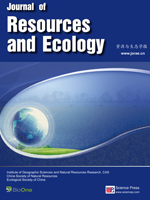Accompanied by global climate change, the annual mean air temperature has experienced a strongly increasing trend in the western China, especially in Xinjiang. The Global Climate Model (GCM) provides an efficient and direct method to assess the process of global climate change and project future climate driven by various factors, especially human activity. Since GCMs' low spatial resolution cannot capture the characteristics of local climate change due to the land surface's complexity, downscaling methods, including Regional Climate Model (RCM), Bias Correction method and Statistical Method, are proposed to process raw data from GCMs for local climate change assessment. This study applied the delta method, one of Bias Correction methods, to make horizontal resolution of 24 GCMs models' monthly outputs into 0.5 °C for analyzing Xinjiang's future climate pattern under three IPCC SRES. A comparison between the results from downscaled dada and raw data from GCMs shows that downscaling methods can improve local climate changing feature in complex land surface and topography and to reduce the uncertainty of climate data generated from GCMs in Xinjiang. The results showed that scenarios A1B, A2 and B1 generated similar patterns and trends in annual mean air temperature and annual precipitation in the early 21st century with fluctuations in the middle of the 21st century. The annual mean air temperature will reach 10°C 11.1°C and 8.5°C in A1B, A2 and B1 by the end of the 21st century, respectively, while the annual precipitation during the projection period will experience an increasing trend with a little fluctuation. During 2020 and 2070, the annual temperature in A1B scenario is greater than the other scenarios on regional average. The annual precipitation in the A1B scenario is also greater than other scenarios during 2020 and 2040 on regional average. However, there exists a large uncertainty within different SRES with an range of 6°C in annual temperature and about 200 mm in annual precipitation. Regionally, annual temperature increases less in the middle Tianshan Mountains, Yili River Basin, the Southern Tianshan Mountains, and downstream of Tarim River than in the Junggar Basin, Pamirs and the northern slope of Kunlun Mountains by the late 21st century. In the western portion of southern Xinjiang, the annual precipitation shows a slightly decreasing trend, but a significant increasing trend was found in eastern Changji, Turpan, Hami and northern Kunlun—Altun Mountains.
How to translate text using browser tools
1 March 2013
Patterns of Climate Change in Xinjiang Projected by IPCC SRES
Li Lanhai,
Bai Lei,
Yao Yanan,
Yang Qing,
Zhao Xin
ACCESS THE FULL ARTICLE

Journal of Resources and Ecology
Vol. 4 • No. 1
March 2013
Vol. 4 • No. 1
March 2013
climate change
delta method
Downscaling
Precipitation
regional climate model
temperature





